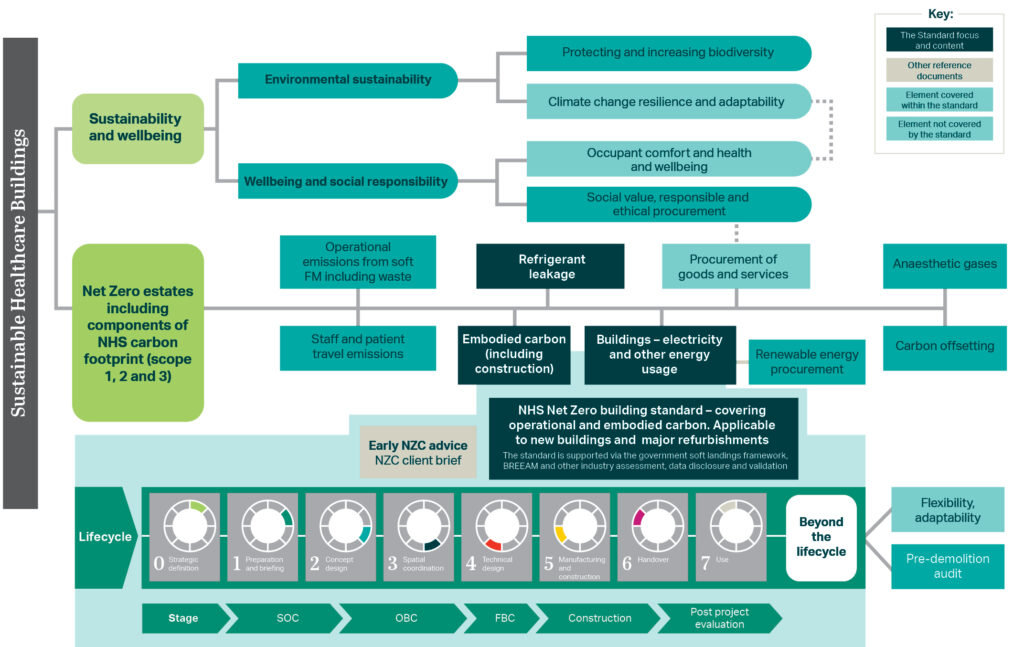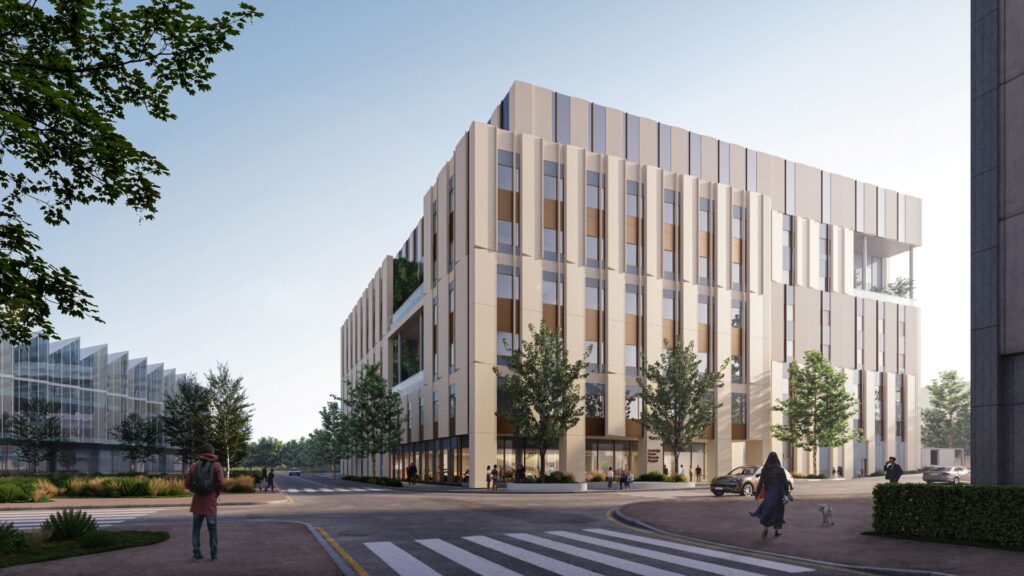Healthy hospitals for a healthy planet: balancing carbon versus space
The National Health Service’s (NHS’s) Net Zero Building Standard sets a precedent for healthcare providers worldwide to follow for taking proactive steps to mitigate climate change. In October 2023, it became compulsory to all future NHS new building projects and refurbishments.
Here, we share what this vital but challenging new standard means for the industry – and why a delicate balance must be struck between minimising carbon and maximising space.
In February 2023, the UK’s National Health Service (NHS) issued the UK’s first Net Zero Building Standard for delivering net zero carbon healthcare buildings. In doing so, it created a blueprint – and set a challenge – for healthcare providers around the world to follow.
The Standard is part of the NHS’s commitment to become net zero carbon by 2045. Decarbonising the NHS is a mammoth task. More than 3000 buildings fall under its stewardship, contributing 4-5 per cent of the UK’s total carbon emissions each year.
Why now?
Climate-change-related health problems are rising, laying an added burden onto an NHS already under deep strain. The NHS’s decision to be the first health system to embed a net zero target into legislation (via the Health and Care Act 2022) is bold and takes a proactive approach towards urgently mitigating climate change.
The impact of rising temperatures is proving vastly expensive to manage. The Royal College of Physicians reported that the 2003 heatwave cost the NHS £41.4 million. The NHS spends over £50 million a year on carbon permits to offset its CO2 production. The costs of failing to decarbonise one of the UK’s biggest institutions are now simply too high from legal, financial, social and health perspectives. In short, climate change threatens the NHS’s viability.
Why develop a standard for new buildings?
Healthcare buildings are energy and resource-hungry spaces, running 24/7, 365 days a year. Decarbonising new buildings can only shave a small slice off the NHS’s total carbon emissions. Much more work is needed to reduce carbon and energy used by existing building stock, and the NHS’s scope 1, 2, 3 and travel emissions, as outlined in the graphic below.

However, by making it mandatory for new buildings to be net zero carbon, the NHS is furthering its decarbonisation mission through implementing incremental improvements. In time, as older buildings are decommissioned, a more efficient estate will be created.
How can it be achieved?
The Standard applies to all investments in new buildings and major upgrades to existing facilities from October 2023. It provides technical guidance to develop sustainable, resilient, and energy efficient healthcare buildings.
The Standard sets out an approach to low carbon building design by setting performance criteria for key design drivers that include:
- Minimum performance targets (MPTs) for construction U-values and building services plant efficiencies.
- Setting carbon limits for operational energy on a departmental basis and embodied carbon for the major components of the building.
- Crucially, it requires the reporting of whole life carbon – both to create an accurate picture of the carbon output of a building and to inform and refine future iterations of the Standard.

The challenges: applying the NHS Standard to our hospital designs
Creating a sustainability standard for inherently power-hungry buildings is immensely difficult – not least when it must be integrated alongside other best practice guidance for achieving high quality healthy, sustainable buildings.
The Standard is designed to be adaptable and recognises hospitals’ high base energy demand. The methodology will undoubtedly need to improve with time as learnings from different hospitals emerge. It is evolving and being actively tested via our projects.
As designers, our biggest challenge is creating a balance between ensuring we achieve sustainability goals, within the NHS’s project budgets – without impacting the critical clinical delivery pathways and outcomes within the flexibility needed for future change.
Cambridge Cancer Research Hospital

Right now, we are testing the implications of net zero design on live projects, including the Cambridge Cancer Research Hospital (CCRH).
A collaboration between Cambridge University Hospitals NHS Foundation Trust, the University of Cambridge, Cancer Research UK, and commercial partners, the 27,083m² project is a nine-storey standalone building.
Due for completion in 2026, the hospital will be a key centre of care and translational research for cancer patients and an early example of the NHS’s net zero carbon building standard in practice. The average hospital on the neighbouring Addenbrooke’s Hospital campus uses around 405-470 kWh/m2 of operational energy a year; CCRH’s operational energy target will be more than half this consumption, at 200 kWh/m2 a year.
To achieve the ambitious carbon reduction target for CCRH, we are focusing on the following:
- Being lean – reducing energy demand through passive design measures and optimising clinical space design.
- Improving fabric – designing a highly insulated, high-performance building envelope.
- Decentralised plant – minimising service runs and providing plant space near the specific clinical functions.
- Creating clean onsite energy – onsite Solar PVs on a biodiverse green/blue roof.
- Efficient use and reuse of heat and cooling – through integrating ASHP and GSHP technologies.
- Measuring through a Whole Life Cycle Carbon approach.
Greener buildings, healthier lives
New healthcare buildings stand at the intersection between health, technology, and design. With hospital buildings being vastly energy intensive in their operation, construction, and eventual decommissioning, creating a net zero carbon hospital without financial carbon offsetting is unlikely to happen. The Standard recognises this and aims to offset its overall carbon footprint at an institutional level, rather than individual buildings.
Decarbonising one of the biggest institutions in Europe, and indeed the world, is an incredibly difficult task: but this does not mean we should not rise to the challenge. The NHS has already reduced its emissions by 30 per cent since 2010; this is just another step forwards in making a low-carbon NHS a reality. The decarbonisation of NHS building design is a significant step forward in improving public health – and a great example of exactly what this institution was created to achieve.






